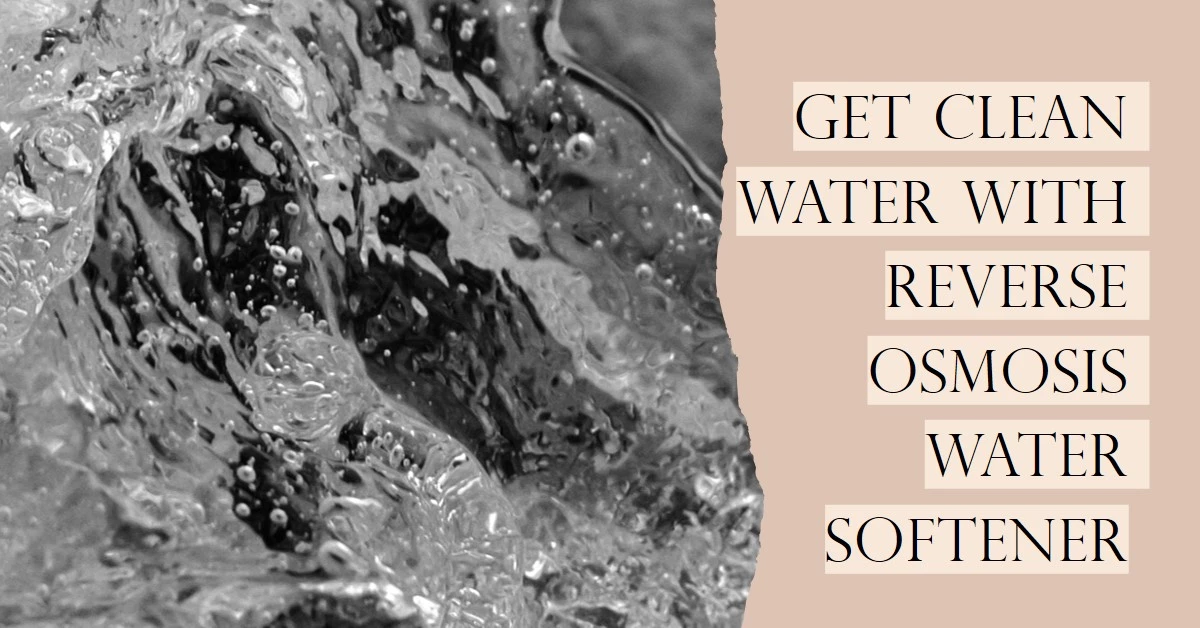Water quality is a vital aspect of our daily lives, impacting our health, cleanliness, and overall well-being. For homeowners and individuals seeking to improve the quality of their household water, investing in a reverse osmosis water softener can be a game-changer. In this comprehensive guide, we will explore the world of reverse osmosis water softeners, delving into their functionality, benefits, and where to find the best options in the market.
Understanding Water Hardness
Water hardness, primarily caused by dissolved minerals such as calcium and magnesium ions, is a common concern for many households. These minerals can lead to issues like scale buildup on fixtures, decreased soap lathering, and potential damage to appliances. A reverse osmosis water softener effectively addresses water hardness, ensuring cleaner and healthier water throughout your home.
The Role of Sediments and Chemicals in Water Quality
In addition to minerals, sediments and chemicals also impact water quality. Sediments like sand, silt, and clay particles can make water appear cloudy and affect its taste. Chemicals, such as chlorine used for disinfection in municipal water supplies, can leave an unpleasant odor and taste. Reverse osmosis water softeners are designed to remove sediments and chemicals, providing crystal-clear, great-tasting water that is free from unwanted impurities.
The Importance of Chlorine and Bacteria Removal
While chlorine serves as an essential disinfectant in water, it can have adverse effects on water quality. Reverse osmosis water softeners incorporate carbon block and coconut shell filtration systems to effectively remove chlorine, leaving you with water that is free from its unpleasant taste and odor.
Moreover, bacteria present in water can pose health risks. Reverse osmosis water softeners utilize a semipermeable membrane that acts as a barrier, preventing bacteria from passing through and ensuring the water you consume is safe and free from harmful microorganisms.
Sodium Chloride, Carbon Block, and Coconut Shell in Water Softening
In water softening, reverse osmosis systems employ a process that utilizes sodium chloride, a common salt. This process involves replacing calcium and magnesium ions, which cause water hardness, with sodium ions, resulting in softened water.
The carbon block and coconut shell filtration system play a crucial role in improving water quality. The carbon block effectively removes impurities, chemicals, and odors, while the coconut shell filter enhances the taste of the water, providing a refreshing experience every time you take a sip.
The Function of a Semipermeable Membrane in Reverse Osmosis
At the heart of a reverse osmosis water softener lies a semipermeable membrane. This membrane has extremely small pores that allow only water molecules to pass through, effectively filtering out impurities, minerals, and contaminants. As water is forced through the membrane under pressure, it undergoes a process called reverse osmosis, resulting in purified and softened water on the other side. This mechanism ensures that you receive water that is not only free from hardness but also free from a wide range of contaminants.
Ionization Process in Water Softening
Apart from removing hardness, reverse osmosis water softeners also utilize an ionization process. This process involves exchanging positively charged magnesium and calcium ions, which contribute to water hardness, with sodium ions. By doing so, the water is softened, providing you with the desired benefits such as reduced scale buildup, improved soap lathering, and enhanced longevity of your plumbing fixtures and appliances.
The Impact of Other Contaminants
In addition to minerals, sediments, chemicals, chlorine, and bacteria, other contaminants can also find their way into water sources. Aluminum, copper, chromium, nitrates, and chlorides are among the substances that can affect water quality. Reverse osmosis water softeners effectively remove these contaminants, ensuring that the water you use in your daily activities, from drinking to cooking, is safe and pure.
The Benefits of Whole House RO Filtration
Installing a whole house reverse osmosis (RO) filtration system brings numerous benefits to your home. This comprehensive water treatment solution provides purified and softened water to every tap, faucet, and showerhead throughout your house. With whole house RO filtration, you can enjoy clean, great-tasting water for drinking, cooking, bathing, and even doing laundry. Say goodbye to the hassles of lugging bottled water or dealing with the negative effects of hard water. Embrace the convenience and peace of mind that come with a whole house reverse osmosis water softener.
Conclusion
Investing in a reverse osmosis water softener is a prudent decision for anyone seeking to enhance their water quality and improve the overall well-being of their household. By effectively addressing water hardness, sediments, chemicals, chlorine, bacteria, and various other contaminants, reverse osmosis water softeners provide you with the pure, soft water you deserve.
With this comprehensive understanding of reverse osmosis water softeners, their benefits, and how they work, you are now empowered to make an informed decision. Explore the wide range of options available and find the perfect reverse osmosis water softener to cater to your specific needs.
Embark on a journey towards a healthier, happier home by embracing the power of reverse osmosis water softeners – your gateway to a world of clean, soft, and pure water.



